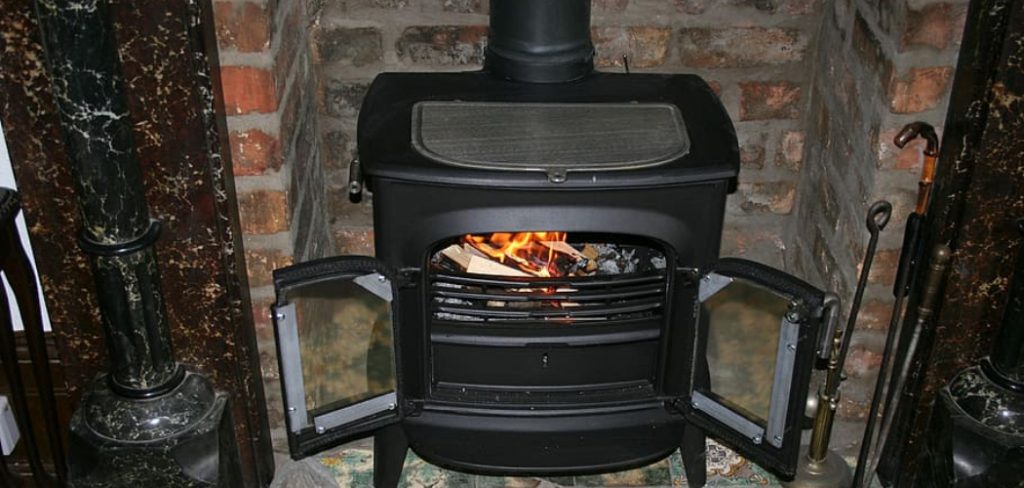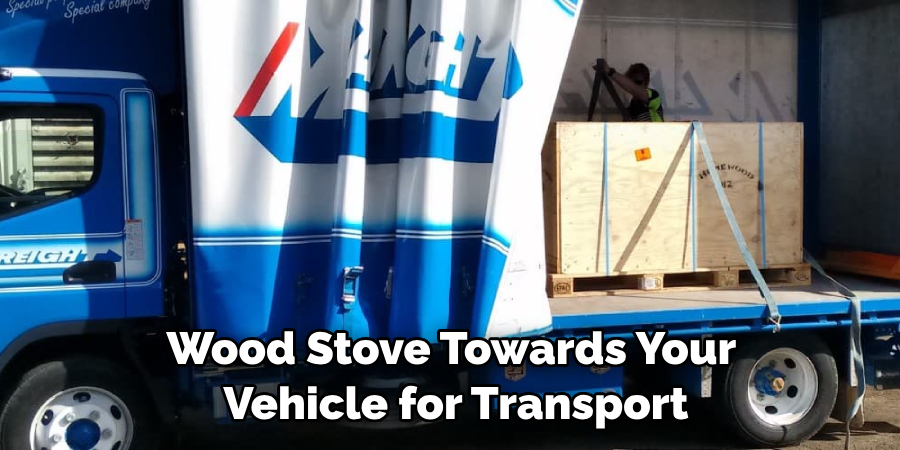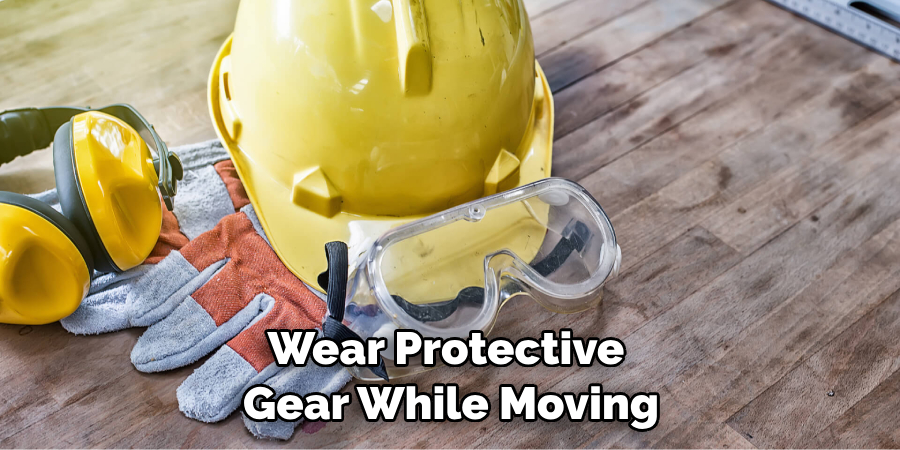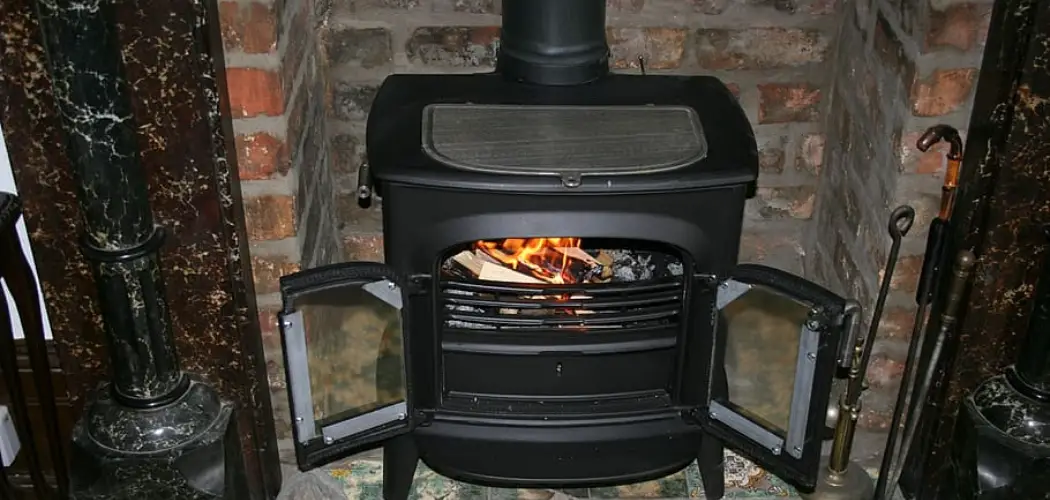Are you looking to move a heavy wood stove? Here are a few tips on how to move a heavy wood stove.

Moving a heavy wood stove is not easy and can often be daunting – especially if you have never done it before! But with the right know-how and preparation, your move can go like clockwork.
In this blog post, we’ll walk you through all of the steps for safely and efficiently moving a heavy wood stove by discussing what equipment you need, how to protect your floors from scratches or burns, best practices for loading and unloading it into a vehicle for transport, as well as some tips on problem solving, should something go awry in the process.
Read on to find out everything you need to know about successfully moving a heavy wood stove!
What Will You Need?
Before you start your move, ensure you are well-equipped with the right tools. Here’s a basic list of what you will need to get the job done:
- A heavy-duty dolly
- Moving blankets or quilt batting (to protect your floor from scratches and burns)
- Duct tape (for securing items during transport)
- Gloves (for protecting your hands while lifting and hauling)
- Cardboard box or other container for any removable parts of the stove.
Once you have gathered all of these pieces, you can begin prepping your wood stove for the move.
10 Easy Steps on How to Move a Heavy Wood Stove
Step 1. Disconnect the Removable Parts:
If your heavy wood stove is equipped with any removable parts, take them off before attempting to move the unit. This includes vent pipes, chimney caps, ash pans, and anything else that can be detached from the main body of the stove. Place these items in a cardboard box or other container for safe transport.

Step 2. Prepare Your Floors:
To help protect your floors from scratches and burns, cover them up with moving blankets or quilt batting. Secure the material to the floor using duct tape if necessary. Additionally, check the stability of the dolly you are using, making sure it is fit for use in carrying a heavy wood stove.
Step 3. Lift & Load onto Dolly:
Next, wear protective gloves and have someone ready to assist you with lifting the stove onto a heavy-duty dolly. Lift the stove up from one side, making sure to keep it balanced and level as you move it onto the dolly. Try to keep the stove as close to the ground as possible when you move it, and take extra care not to bump or drag it across any surfaces.
Step 4. Secure the Stove:
Once loaded onto the dolly, secure the stove with straps or rope if necessary. This will help keep it in place during transport. Additionally, if you have any removable parts that are not yet in a container, secure them to the dolly with duct tape.
Step 5. Move & Load into Vehicle:
Now you can begin moving the heavy wood stove towards your vehicle for transport. Ensure you are using caution while navigating doorways and other tight spaces to avoid mishaps! Once at your vehicle, lift and load the unit into place and be sure to secure it with straps or rope again after loading.
Step 6. Transport to Destination:
Now you can begin your transport to the new location. Make sure that you take special precautions while moving over uneven terrain or up/down stairs and ramps if necessary. Another important note is to be wary of any turns that may be too tight for the size of your vehicle, as this can cause damage or injury.

Step 7. Unload from Vehicle & Move into Place:
When arriving at your destination, unload the stove with care and move it into place following the same steps as above for lifting and loading onto a dolly. If you are using an elevator, make sure to take extra precautions – it’s best to have at least two people helping with this step. Keep the stove as close to the wall as possible and avoid bumping any walls or doorways.
Step 8. Secure Stove in Place:
Once you have the wood stove in its intended location, secure it properly using bolts or screws so that it doesn’t move during use. If the wood stove will be placed on a carpeted floor, it’s best to use an underlayment or other protective material to protect the floor from any heat or sparks.
Step 9. Reassemble Removable Parts:
Next, reassemble the removable parts that you detached from the stove earlier. This includes vent pipes, chimney caps, and ash pans, if applicable. Remember that you should never operate a wood stove without a chimney cap, so secure this piece tightly before turning on the unit.
Step 10. Enjoy your Fire:
Finally, light a fire in your wood stove and enjoy! Be sure to read the included manufacturer’s manual beforehand to become familiar with its operations and safety instructions.
These steps will help you move a heavy wood stove safely and efficiently! Take your time and use extra caution during each process step for a successful move.
5 Additional Tips and Tricks
- wear protective gear while moving a heavy wood stove. This includes gloves, safety glasses, and long pants.
- Have a plan of action for the move beforehand to be prepared for any obstacles. It will also help you stay organized and focused throughout the process.
- Use furniture sliders or blankets to easily drag the stove over hard surfaces without damaging it or your flooring.
- Enlist the help of another person when attempting to lift and carry a heavy wood stove, as this can make it much easier on both parties involved.
- When transporting the woodstove in a vehicle, secure it properly with straps or bungee cords to prevent it from sliding around and getting damaged.

With these tips and tricks, you should have no problem moving a heavy wood stove safely and successfully. Always take all necessary precautions when handling large or heavy items.
5 Things You Should Avoid
- Avoid placing your hands underneath the wood stove when attempting to lift it.
- Try to avoid moving the wood stove by yourself if it is particularly heavy or bulky.
- 3. Avoid dropping the wood stove, as this can cause damage and put you at risk of injury.
- 4. Steer clear of slippery surfaces while maneuvering a large woodstove, as they can make things more difficult and dangerous.
- 5. Steer clear of any stairs or sharp turns when transporting a heavy item like a woodstove in a vehicle, as these can be hazardous and cause an accident if not handled properly.
Following these simple guidelines will help ensure that you safely and successfully move your heavy wood stove with minimal hassle and risk of injury.
How Do You Move a Wood Stove on Your Legs?
If you don’t have access to a dolly or furniture sliders, you may consider using your legs to move the wood stove. It’s important to remember that this option only works for smaller stoves and not large, heavy ones. To do this, make sure you are wearing some form of protective gear, such as gloves and safety glasses. Then, lift your hands on either side of the stove just enough so your legs can move it.
Keep your back straight while doing this, and try not to tilt the stove too much, as it could cause an injury or strain on your body. Once in position, ensure adequate space for your feet to move around, and then start walking forwards, guiding the wood stove along with you. If possible, have someone help guide the stove from behind to ensure that it does not tilt or fall.
Using your legs is a great way to move a smaller wood stove without needing any additional tools or equipment. Just remember to take all necessary safety precautions while doing so to prevent any accidents or injuries. Good luck!

Which is Heavier a Wood or Coal Burning Stove?
The weight of the stove will depend on its size and material. Generally speaking, wood burning stoves tend to be bulkier and heavier than coal burning ones due to the larger amount of fuel they require. For example, a small wood stove may weigh around 75-100 pounds, while a coal stove can be as light as 15-20 pounds.
Additionally, the type of material in which it is constructed also affects its overall weight; cast iron stoves are usually heavier than steel ones as they tend to be more durable. So when trying to determine which is heavier, a block of wood or coal burning stove, you should consider all factors before making your decision.
Conclusion
How to move a heavy wood stove requires special consideration and safety precautions. With the help of a few friends or family members, there are many ways to get the job done safely.
From disassembling parts to using equipment like moving blankets and dollies, plenty of options are available for anyone looking to complete this task. In addition, it’s always wise to check manufacturer guidelines if you’re unfamiliar with how to do something.
Be bold and contact your local moving company if you feel uncomfortable doing so yourself – they can provide advice and potentially even lend assistance! Finally, always remember that safety should always remain the top priority no matter what method you select.
Following these steps and incorporating extra caution in your preparations, you can successfully move your wood stove with minimal fuss and bother.

